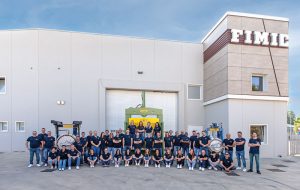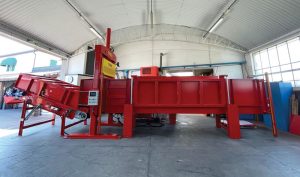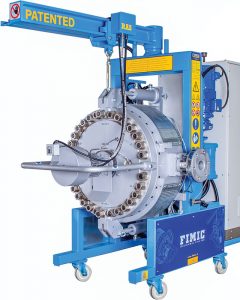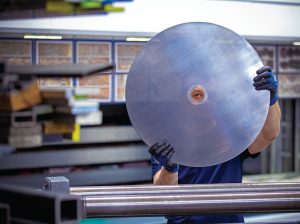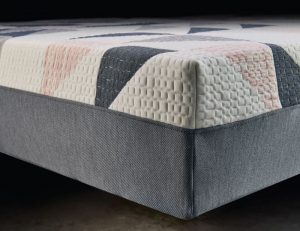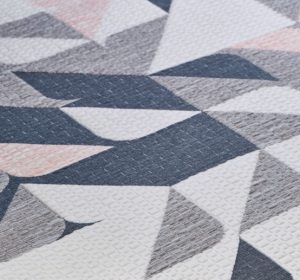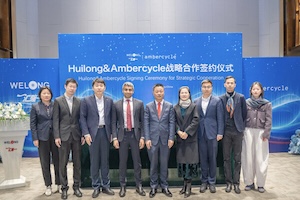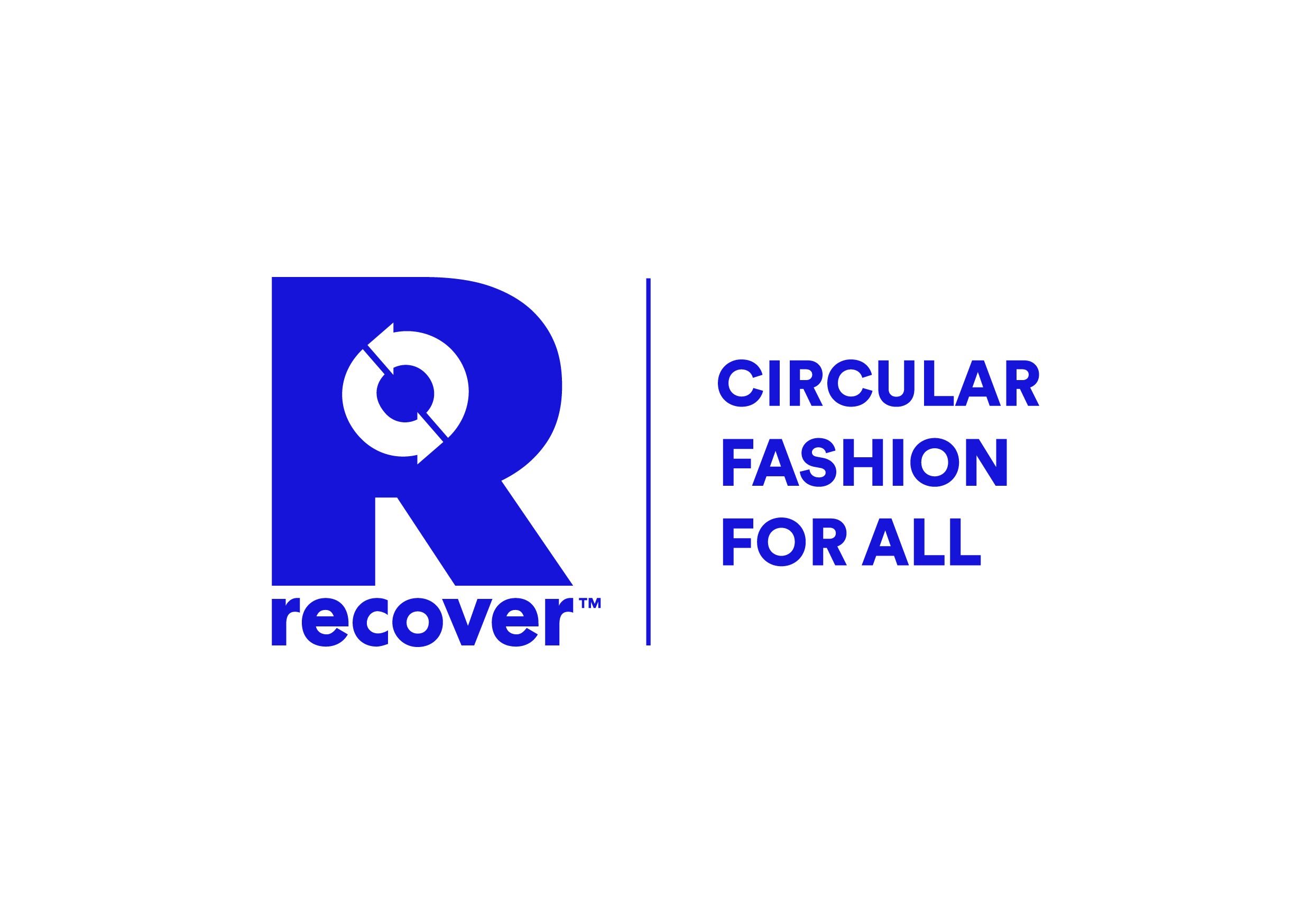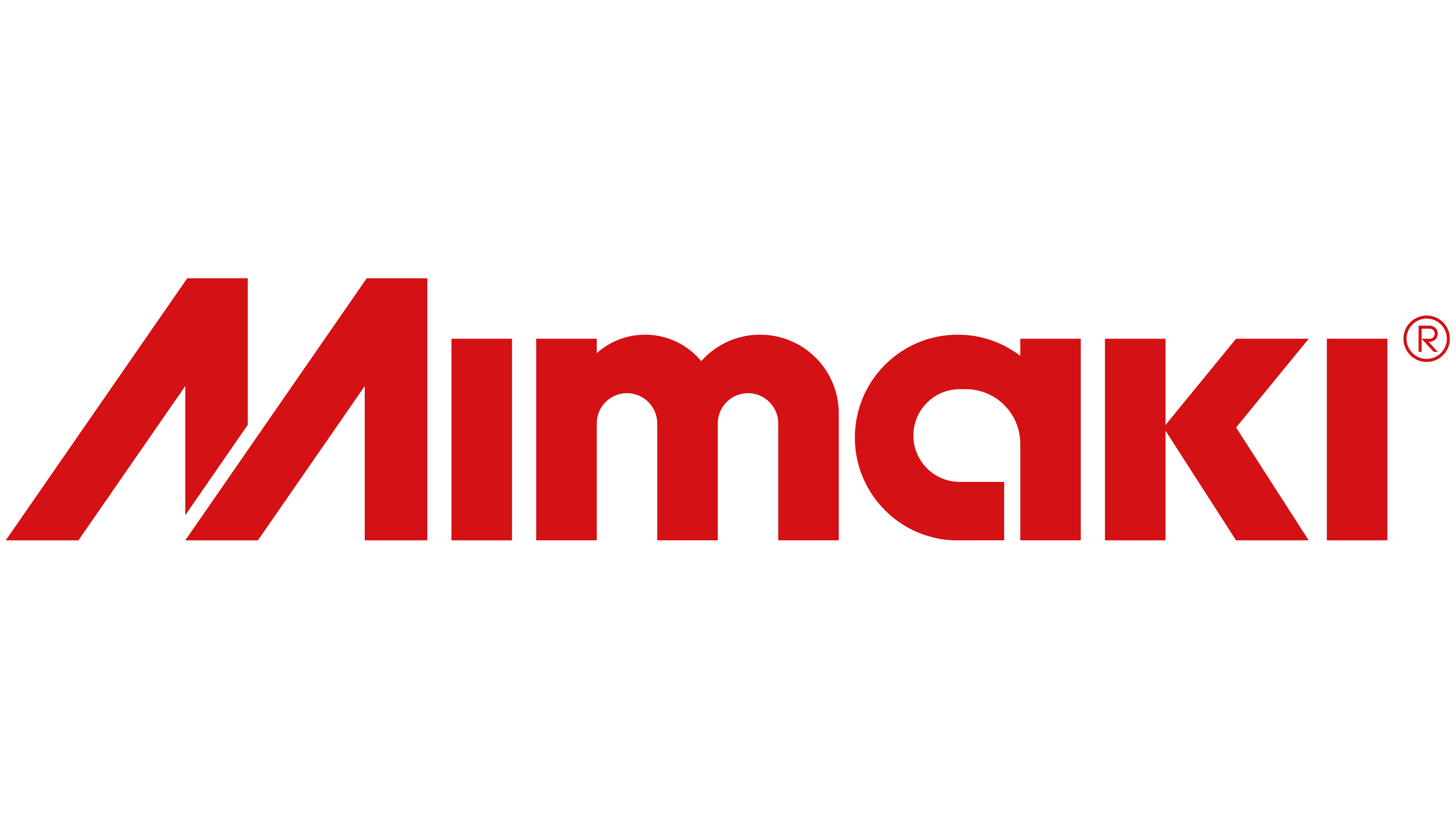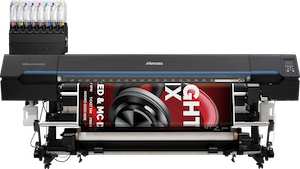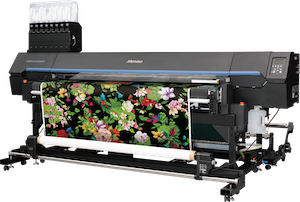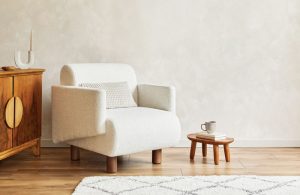 Lectra offers a road map for the upholstered furniture industry as it shifts towards more sustainable production.
Lectra offers a road map for the upholstered furniture industry as it shifts towards more sustainable production.
TW Special Report
Sustainability has become a critical focus across industries, especially in home furnishings. According to the Sustainable Furnishings Council, sustainability in this sector refers to the design, production, sale, and use of furniture in ways that aim to minimize negative environmental, health, and social impacts. This approach prioritizes the long-term well-being of the planet and its inhabitants over short-term gains, integrating principles that promote ecological responsibility throughout a product’s entire life cycle.
But incorporating sustainability in upholstery or furniture design is not a new approach, at least not in the minds of some designers and manufacturers. In 1976, German designer Dieter Rams introduced his principles of good design, which included “Good design is long-lasting” and “Good design is environmentally friendly.”
A survey by the Center for Indus-trial Studies (CSIL) found 45 percent of its manufacturer respondents cited “environmental sustainability” as a top priority in all areas of their business strategies.1 According to a recent Furniture Today survey, the furniture industry gave itself an aver-age of a “C” grade on its sustainability efforts. Many noted the industry’s efforts but found the overall momentum lacking. Despite all this, 77 percent of manufacturers believed sustainability should be a priority.2
“The meaning of sustainability is not only the certifications or sustainable products, it goes beyond. It needs to include also the business environment and the social levels, connecting every-thing to one place. And then we can call it a sustainable business,” explained Ovidijus Jalonskis, CEO Vilmers, a Scandinavian furniture company that is setting new standards for sustainability and customer-centric experiences.
But how can this be achieved? “By moving forward, upholstered furniture might be best served by defining sustainability as in this way: by connecting the manufacturing process from end to end and resulting in a sustainable business model,” Jalonskis shared. “Balancing the social, environmental, and economic aspects of sustainability in the upholstered furniture industry is indeed challenging, how-ever a circular approach that emphasizes material recovery, longevity, and the responsible management of resources throughout a product’s life cycle can and will make a difference.”
Core Components Of Sustainable Furniture
Sustainability in the upholstered furniture sector is driven by a focus on reducing environmental and social impacts across the product life cycle.
Key components of this effort include addressing packaging and emissions, ensuring material health, minimizing environmental impact, and upholding social responsibility standards.
But for Nicola Coropulis, CEO of Poltrona Frau, an Italy-based company focused on providing global living solutions in a sustainable way for international customers: “Sustain-ability also means durability. The products are handcrafted to last generations, and we offer a dedicated service team to restore and reupholster items, with collection and delivery services available worldwide.”
Eco-Friendly Manufacturing Practices And Sourcing
Central to sustainable home furnishings is the promotion of eco-friendly manufacturing practices and sourcing. Some 36 percent of CSIL survey1 respondents chose “production process” as a key focus area for improving sustainability, and this can be achieved by adopting different manufacturing practices.
Reducing Inventory And Stock — On-demand manufacturing allows companies to eliminate overproduction because they only produce what’s needed and don’t have excess material or product inventory. Additionally, the need for shipping and storing components and raw materials in bulk is eliminated, further reducing a company’s environmental footprint. On-demand manufacturing is a more sustainable option, and it offers furniture makers the ability to adapt to market fluctuations and improve customization.
For instance, Poltrona Frau combines sustainability and customization in various ways. Its products are made to order and fully customizable, offering consumers an extensive selection of materials — including various types of sustainable materials and leather —Pelle Frau Impact Less, FSC-certified wood, or fabric, for example —and a choice of more than 100 colors for each individual product. Thanks to technology, customers can view their personalized product through the configurator available on the website.
Reducing Waste — Highly precise, minimal buffer cutting and auto-mated marker making ensure that manufacturers limit both waste and cost per cut part. The use of technology enables manufacturers to optimize nesting with minimal buffer, amounting to 3 percent in material savings that represents 15 percent of reduction waste. In terms of reducing waste, this applies not only to the manufacturing process but also to the shipping by using recyclable materials or cutting back on the amount used in packing and, ultimately, costing furniture businesses less.
Jalonskis cites his company’s replacement of cardboard and plastic packages with 100-percent recycled packaging materials, improving the customers’ experience, and reducing the company’s additional tax burden. “In the end, we even saved money,” he said. “You can find that sustainability can help you to improve your business, and the customers don’t need to pay extra for that.”
Reducing Energy — Using renewable energy sources and optimizing manufacturing processes are efficient ways to reduce overall energy consumption. Adopting new and upgraded cutting solutions that have been eco-designed is vital. Energy consumption of the cutting equipment can be reduced 30 to 40 percent by making these investments. For instance, more efficient cutting machines with higher production capacity allow companies to produce more cut pieces within shorter periods, reducing the carbon dioxide emissions rate for each one.
Emissions
One of the most critical concerns in upholstered furniture is the reduction of harmful emissions, particularly volatile organic compounds (VOCs). The healthiest upholstered furniture doesn’t add chemical flame retardants or stain-guard fabric coatings on its fabrics and should use natural latex or low-VOC certified foam in the cushions. Formaldehyde, commonly found in adhesives and particleboard, is a known irritant and carcinogen. Over the past 20 to 30 years, there has been a significant push towards limiting its use in furniture.
Historically, emissions regulations were minimal, with manufacturers rarely required to meet strict standards. However, with growing awareness of indoor air quality’s impact on health, regulatory bodies have implemented stricter guide-lines. Today, compliance with standards is a crucial indicator of a product’s commitment to minimizing harmful emissions. Industry practices now include the use of low-emission adhesives and treatments.
Material Health
The material health of upholstered furniture is another core component of sustainability. This focuses on using non-toxic, safe materials throughout the product’s construction. Regulatory frameworks, such as California’s Proposition 65 (Prop 65), have been influential in shaping industry practices by requiring manufacturers to disclose harmful chemicals in their products. A growing focus is on eliminating per- and polyfluoroalkyl substances (PFAS), often used for stain resistance. These “forever chemicals” are persistent in the environment and pose health risks. As a result, many manufacturers are now turning to non-toxic, water-based treatments and exploring safer, innovative mate-rials like organic cotton, wool, and natural latex to meet health and safety standards without compromising product performance. Examples of non-PFAS coatings include coatings made from elements like silicon, oxygen, carbon, and hydrogen.
Environmental Impact
The environmental impact of furniture manufacturing extends beyond emissions and toxic chemicals. It significantly affects natural resources like water and contributes to climate change through deforestation and carbon emissions. In Europe, the EU Regulation against deforestation and forest degradation has impacted producers, who must ensure that the materials used do not come from deforested land. The industry has made strides in sourcing sustainable wood, focusing on certified options like to ensure practices that protect ecosystems and pro-mote legal harvesting.
Social Responsibility
The concept of social responsibility in upholstered furniture is crucial, given the global nature of the supply chain. Around 40 to 50 percent of upholstered furniture is sourced from countries like China and Vietnam, where labor standards can be less stringent. This raises concerns about worker safety, fair wages, and ethical labor practices.
Brands play a critical role in verifying labor conditions, particularly in regions where local regulations may not adequately protect workers. In the United States, the Uyghur Forced Labor Prevention Act bans imports of Chinese products made using Uyghurs. Leading companies are increasingly implementing social compliance audits and working with third-party certifiers to ensure their suppliers meet ethical standards.
While voluntary efforts from industry leaders drive some progress, there is a growing call for regulatory frame-works to enforce minimum standards globally. Voluntary initiatives — such as adhering to the Fair Labor Association or the Ethical Trading Initiative— promote fair treatment of workers throughout the supply chain.
Global Perspectives
As global awareness of environmental impacts rises, companies worldwide are exploring new ways to reduce their ecological footprint. However, sustainability practices in upholstery manufacturing vary significantly across different regions, influenced by local regulations, consumer preferences, and economic factors.
Global supply chains in upholstery manufacturing have undergone significant shifts driven by demo-graphic changes, geopolitical tensions, and disruptions from the COVID-19 pandemic. The demo-graphic trend of aging populations in Europe and the United States has led to increased demand for durable, high-quality furniture that prioritizes comfort and longevity. This has driven manufacturers to focus on sustainable, long-lasting materials that cater to these preferences.
Geopolitical factors, such as trade wars and increasing tariffs, have prompted companies to reassess their reliance on Asian manufacturing hubs. Many businesses are exploring reshoring—moving production closer to their primary markets—to reduce dependence on international suppliers and mitigate risks associated with long supply chains. This shift has also been influenced by the need for better control over environmental standards and compliance with local sustainability regulations.
The pandemic exposed vulnerabilities in global supply chains, prompting manufacturers to adopt more resilient and sustainable practices. This transition has also highlighted the importance of digital technologies, such as AI and digital twin technology, in optimizing supply chains for greater efficiency and sustainability through transparency.
Challenges Of Sustainability In Upholstered Furniture
The upholstered furniture industry faces increasing pressure to adopt sustainable practices. However, achieving sustainability in this sector has its challenges.
Recyclability Concerns —Upholstered furniture is notoriously difficult to recycle due to its composite materials. Typically made of a mix of wood, metal, foam, fabric, and adhesives, separating these components for recycling is labor intensive and costly. Foam poses a significant issue because it is often treated with fire retardants and chemicals, making it unsuitable for simple reuse.
Consequently, many pieces of upholstered furniture end up in land-fills, highlighting the industry’s struggle with developing effective recycling solutions. The United States Environmental Protection Agency estimates that 9 million tons of furniture are thrown away every year.3 And in Europe, 5 million tons of furniture is discarded every year, the majority of which is destined for either landfills or incineration.4
Costs Of Sustainability — Incorporating sustainable practices into the production of upholstered furniture can be expensive. Sourcing ecofriendly materials such as organic fabrics, responsibly harvested wood, and recyclable metal components significantly increases costs. For many manufacturers, especially smaller companies, the investment required to overhaul supply chains, implement sustainable practices, and meet certification standards can be prohibitive. As a result, these costs are often passed on to consumers, making sustainably produced furniture less accessible and competitive compared to traditional offerings.
Adopting sustainable manufacturing processes requires significant investment in technology and equipment. Shifting towards greener practices, such as using water-based adhesives or energy-efficient machinery, involves high up-front costs and ongoing maintenance expenses.
Uneven Playing Field — Sustainability standards and regulations vary widely across regions and markets, creating an uneven playing field for manufacturers. Companies operating in countries with strict environmental regulations face higher compliance costs, while those in regions with less stringent policies may continue using cheaper, non-sustainable materials.
This disparity makes it difficult for responsible manufacturers to compete on price, particularly in a global market where cost is a significant factor for consumers. But there is hope. A recent U.S. study shows that 76 percent of Americans are willing to pay a higher price tag for eco-friendly furniture.5
Labor Shortages — The furniture industry is grappling with labor shortages, which are exacerbated by the specialized skills needed for sustainable manufacturing. Skilled artisans capable of working with eco-friendly materials and techniques are in short supply. Steve Kooy, Health & Sustainability director for BIFMA, finds this to be an issue of concerns for manufacturers.
This issue is particularly concerning for manufacturers based in rural areas, where the access to skilled workers is more limited. Additionally, the existing skilled labor is aging out and efforts to recruit and train new generations to replace this expertise have been unsuccessful. This has led to increased competition for talent and rising labor costs.
Supply Chain Disruptions And Near-Shoring — Global supply chain disruptions have prompted many furniture manufacturers to bring manufacturing back closer to home markets. It can reduce transportation delays but also increase labor costs, exacerbating the overall economic burden even as it reduces dependency on foreign sup-pliers. While nearshoring or reshoring can lead to improved quality control and shorter lead times, it also introduces new challenges, such as the need to rebuild domestic supply chains that support sustainable mate-rial sourcing. Finding local suppliers that meet high sustainability standards can be difficult and costly, further complicating the industry’s transition to greener practices.
Consumer Trends And Sustainability Marketing — Consumer demand for sustainable products is growing, but there is still a gap between interest and actual purchasing behavior, mainly due to higher prices and limited availability.
Consumers care about sustainability, but they don’t want to pay anything extra for sustainability. They have doubts about the quality,” explained Kooy. For some, the real question is should the responsibility for promoting sustainable upholstery lie with the consumers or the manufacturers?
Furthermore, consumers may struggle to discern genuinely sustain-able products from those that are merely marketed as such, due to a lack of standardized certification. This creates challenges for brands attempting to build trust and differentiate their offerings in an increasingly crowded market focused on sustainability claims.
There also is a generational shift in consumer habits, particularly among younger generations, suggests that materialism may be on the decline, affecting demand for new furniture.
Strategies For Sustainability
Adopting sustainable practices in the upholstered furniture industry is no longer optional; it is essential for long-term business success and environmental responsibility. Technological innovations will continue to play a crucial role in enhancing sustain-ability and customization for upholstery manufacturers, however embracing a sustainable design philosophy is also vital.
“This means emphasizing longevity and timeless aesthetics to reduce the need for frequent replacements. Thoughtful design can lead to products that remain relevant and functional over time, minimizing waste,” Coropulis said.
There are key strategies that companies can implement to enhance sustainability including:
• Education and consumer aware-ness;
• Regulations and recognized sus-tainability certifications;
• Better use of Industry 4.0 tech-nologies;
• Transportation, logistics and con-sumption patterns; and
• Emerging business models.
Looking Ahead
The future of sustainability in upholstery manufacturing will likely be driven by a combination of regulatory shifts, industry 4.0 technologies, innovations, and changing consumer preferences. As companies continue to adapt and evolve, those prioritizing sustainable practices are expected to gain a competitive edge, build stronger customer loyalty, and con-tribute positively to the environment. In summary, while the journey toward full sustainability in upholstered furniture is challenging, it is also filled with immense potential. The transition may be gradual, but the collective efforts of manufacturers, policymakers, and consumers hold the promise of a more sustainable future for the global furniture market.
References:
1 CSIL survey among upholstered producers, 2021 2 www.furnituretoday.com
3 www.architecturaldigest.com
4 eeb.org
5 www1.eere.energy.gov
Editor’s note: This article was adapted from a white paper exploring the future of sustainability in the furniture industry published by the Lectra Observatory, a research initiative launched by France-based Lectra. To read the full version of the white paper, which includes more on global perspectives and sustainablity strategies , please visit TextileWorld.com.
2025 Quarterly Issue I
